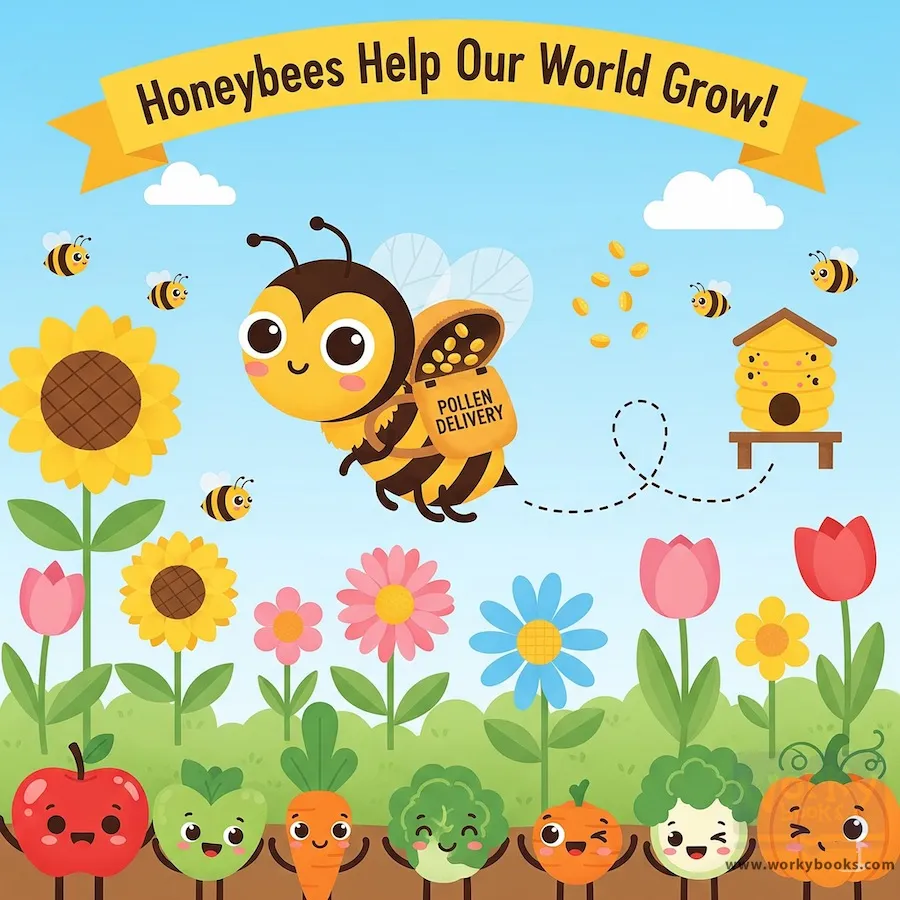Why Are Honeybees Important? — Reading Comprehension
Grades
- 5
- 6
- 7
- 8
Standards
- MS-LS2-4
- RI.6.3
- RI.7.3
- RI.8.8
PRINT+DIGITAL RESOURCE
This learning resource is available in interactive and printable formats. The interactive worksheet can be played online and assigned to students. The Printable PDF version can be downloaded and printed for completion by hand.
About This Reader
This passage explores the essential ecological and agricultural roles of honeybees, supporting NGSS standard MS-LS2-4 on ecosystem dynamics and functioning. Tailored for 7th-grade students, the content highlights how honeybees contribute to biodiversity and food production through pollination of over 90 different crops. Students discover the remarkable interdependence between flowering plants and honeybees, with special attention to almond production—where commercial beekeeping operations relocate millions of colonies annually to California orchards. The passage creates connections between pollination services and everyday foods, helping students understand that approximately one-third of human food requires bee pollination. By examining threats to honeybee populations including parasites, diseases, pesticides, and habitat loss, students can evaluate how these changes affect not only bee populations but entire ecosystems and human food security. The content reinforces the concept that ecosystem stability depends on maintaining biodiversity and helps students recognize how small organisms like honeybees have disproportionately large impacts on both natural systems and human agriculture.
Perfect For:
👩🏫 Teachers
- • Reading comprehension practice
- • Auto-graded assessments
- • Literacy skill development
👨👩👧👦 Parents
- • Reading practice at home
- • Comprehension improvement
- • Educational reading time
🏠 Homeschoolers
- • Reading curriculum support
- • Independent reading practice
- • Progress monitoring
Reading Features:
📖
Reading Passage
Engaging fiction or nonfiction text
❓
Comprehension Quiz
Auto-graded questions
📊
Instant Feedback
Immediate results and scoring
📄
Printable Version
Download for offline reading
🔊
Read Aloud
Voice-over with word highlighting






















